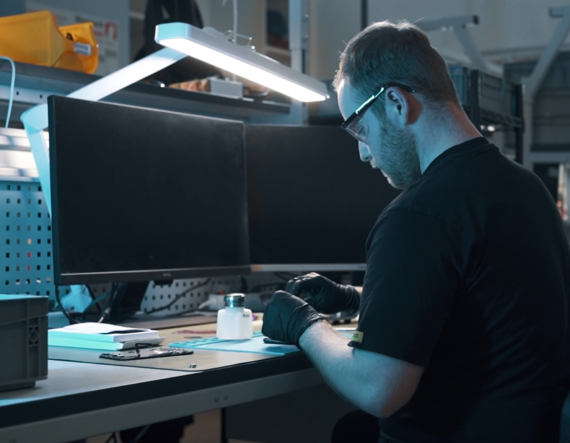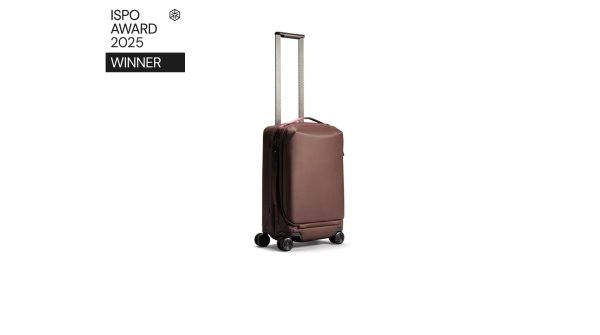It happens in a heartbeat: a curb edge, a slick carpet of leaves, or a rogue tree root—any road or trail runner needs total focus. One misstep and you’re suddenly on the ground. In the best-case scenario you’re left with a few scrapes that heal quickly. What most athletes forget to factor in beforehand is the smart tech they carry—and the risk of a total loss for smartwatch, smartphone, and the rest.
That loss can be a real dilemma. Price aside, today’s workouts rely on far more than lap times. Road runners track split pace and HRV; trail runners depend on offline topo maps, weather alerts, and live tracking for friends. If that device fails, the long run can end without navigation or an emergency call option.
A cracked display or a bruised battery pack, however, doesn’t automatically mean buying new. Specialist repair shops now swap out screens, seals, and battery cells in hours instead of weeks. A replacement screen for a multisport watch rarely tops €120, while a new premium model can easily cost four to five times that. And failures happen fast. “Devices break pretty quickly when they hit the ground hard,” notes Aaron Weyrauch, CEO of Weyrauch Repair—one of Wertgarantie’s authorized service partners. His numbers favor repair: seven out of ten smartwatches can be economically rescued because the main board and sensor stack are usually unharmed.

Every repair saves both money and the planet. Discarding consumer electronics that could still be fixed has heavy environmental consequences: according to a recent Wertgarantie study, Germany generates about 356,000 metric tons of e-waste each year because broken devices are scrapped instead of repaired—roughly 9 kg per household. Producing replacement devices adds around 2 million t of CO₂-equivalent emissions. Yet 77 percent of consumers opt against repair—often because the device seems “too old” or the quoted cost feels high. If the national repair rate rose by just one quarter, Germany could cut roughly 90,000 t of e-waste every year.
Repairing also extends a product’s life cycle and preserves its material value: sapphire glass, titanium housings—resources that don’t need to be mined again. Professional workshops provide six- to twelve-month warranties on replacement parts, reducing risk and building trust. At the same time, a secondary market for certified-refurbished wearables is emerging, giving newcomers a sustainable gateway into data-driven training. In short, repairs make the circular economy tangible.
That’s where Wertgarantie steps in, covering repair costs when accidents happen. With its “3-for-2 Complete Protection” offer, athletes can insure three devices—such as smartwatches or fitness trackers—against cracked screens, water damage, mishandling, and technical faults while paying for coverage on only two. Claim online, and you’re directed to one of about 2,400 partner workshops in Germany and Austria, achieving a 98 percent match rate for convenient, local repairs.

Good to know: Beyond potential repairs, your sustainability score rises when a battery lasts for the long haul. That comes down to day-to-day handling—often right at the wall outlet. “I always advise, and most manufacturers now agree, to stop charging at 80 percent and to avoid deep discharge. Many athletes use their trackers only in season, then leave them sitting for half a year. A full top-up once a month is enough; otherwise the cell dies and can’t be revived,” explains Aaron Weyrauch.
Hot-weather runners should grab power banks with thermal cut-off and park devices in the shade during breaks: overheating burns through charge cycles. “On long outings in direct sun, the gear overheats and the battery suffers. Take the phone out of the sun now and then—that’s crucial,” Weyrauch adds. Lithium-ion cells dislike cold just as much, so in winter the phone belongs in an inner pocket, never the outer shell. For off-season storage: leave about 50 percent charge, switch to airplane mode, and “wake” the unit every four weeks. Brief, moderate fast-charging is fine; hours of trickle-charging overnight strain the chemistry. Follow these steps and the battery can last five years or more—turning your wearable into a long-term training partner rather than disposable tech.

Sweat, dust, and rain are constant companions for runners. Regular upkeep wards off corrosion and connection failures. “Cotton swabs are tricky here,” warns Weyrauch. “Compressed air is best—no metal tools, no Q-tips.” A quick burst after each workout blows salt crystals out of sensor gaps. Anyone eyeing a trail marathon should first clean the seals and check the rubber plugs on charging ports. With these care routines—and the right coverage for your electronics—you can head into summer trail runs and the fall marathon season with a lot less to worry about.

Wertgarantie is a specialist insurer based in Hanover, Germany, founded in 1963. The company provides tailored coverage for electronics, household appliances, bikes, and e-bikes. Today, over 8.4 million customers across Europe rely on its services. Built on the philosophy of “repair instead of replace,” Wertgarantie stands for sustainability, customer focus, and a strong partner network in the specialist retail channel.
For outdoor sports, Wertgarantie offers customized protection plans. In addition to wearables, coverage extends to outdoor tech like action cameras or digital gadgets. Once damage is reported, devices are repaired either through partner workshops or by using the online dealer and repair locator.
- ISPO awards
- Mountain sports
- Bike
- Design
- Retail
- Fitness
- Health
- ISPO Job Market
- ISPO Munich
- ISPO Shanghai
- Running
- Brands
- Sustainability
- Olympia
- OutDoor
- Promotion
- Sports Business
- ISPO Textrends
- Triathlon
- Water sports
- Winter sports
- eSports
- SportsTech
- OutDoor by ISPO
- Heroes
- Transformation
- Sport Fashion
- Urban Culture
- Challenges of a CEO
- Trade fairs
- Sports
- Find the Balance
- Product reviews
- Newsletter Exclusive Area
- Magazine




